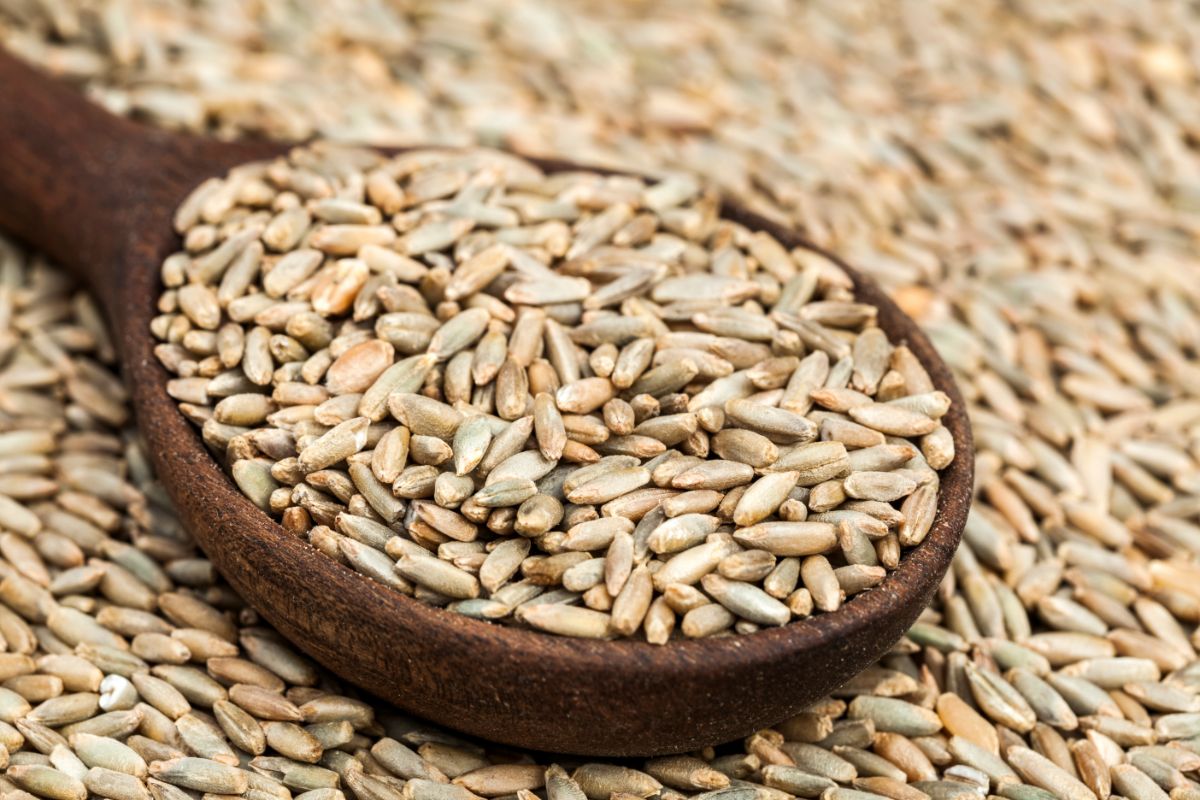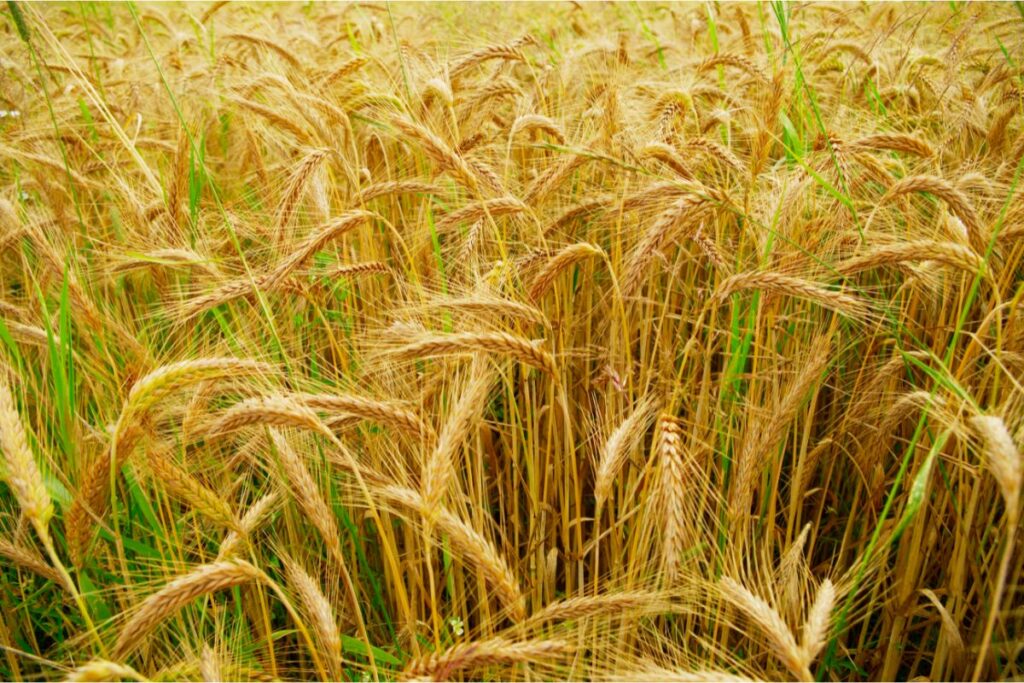Since its development in the 19th century, triticale has been an important crop, and one that has had many different applications throughout a number of different industries.
However, while there are similarities between triticale and its ‘father’ crop rye, there are a number of notable differences.
But what exactly are the differences between triticale and rye, and how does this impact their usefulness?
What Is Triticale?
Triticale is a genetically bred cereal crop – made from a combination of wheat and rye, wherein wheat is the ‘mother’ and rye is the ‘father’ crop respectively.
What Are The Attributes Of Triticale Breeding?
Like most hybrids in nature, triticale was initially bred to have the benefits of wheat and rye – giving growers the best of both worlds, and a resilient crop that could make them money.
Wheat
Wheat is one of the most commercially viable and widely used crops, which is why it was the perfect choice for the ‘female’ part of the breeding process.
In using wheat in this way, triticale developed much of the same commercial viability as its mother, meaning that growers can make plenty of money from its sale.
Rye
The benefits of rye are that it is widely resilient against nature and the elements – something that makes it a good crop to grow in more hostile parts of the world, or indeed during the winter time when fields would normally be bare.
This means that triticale has both the commercial viability, and the widespread resilience to act as a profitable year-round crop that can be grown and sold in some of the world’s most inhospitable countries.
One of the countries where it has been notably popular is in Australia, where rural expansion has seen previously unviable plots of land becoming usable for the first time in recent history.
What Is The Difference Between Triticale & Rye?
However, despite possessing some of the genes from the ‘father’ crop, there are still many differences between triticale and rye.
Vitamins & Minerals
While both crops are laden with various minerals, vitamins, and nutrients, they each excel in areas where the other falls short.
Both crops are rich in all of the following nutrients, but when it comes to a clear winner, it is triticale – something that can be highlighted in the following list:
- Vitamin B3 – rye: 4.27 mg, triticale: 1.43 mg
- Potassium – rye: 510 mg, triticale: 332 mg
- Phosphorus – rye: 332 mg, triticale: 358 mg
- Magnesium – rye: 110 mg, triticale: 130 mg
- Zinc – rye: 2.65 mg, triticale: 3.45 mg
- Folate – rye: 38 ug, triticale: 73 ug
As you can see, while rye possesses numerous beneficial properties, it only exceeds triticale in vitamin B3 and potassium content, meaning that, technically speaking, triticale is the more beneficial crop from a nutritional standpoint.
Protein
Triticale also contains more protein than rye – making it a technically better crop for food production, as well as for animal feed.
This is important for a balanced diet, and can lead to better muscle function, healing, and development.
Carbohydrates
Triticale also contains less carbohydrates than rye – although the differences are minimal. However, this still means that triticale is healthier, especially for those looking to lose weight, or avoid excess sugars in their diet.
Fats
Triticale is also higher in beneficial fats than rye, beating the parent plant by 2.0 g to 1.63 g. This means that triticale is actually a more beneficial part of a balanced diet than its ‘father’.
Sugars
Rye is also higher in terms of sugar content than triticale, containing 0.98 g to 0 g respectively. This means that, while only moderately different, triticale is also better in terms of sugar.
Calcium
Triticale also contains more natural calcium than rye, meaning that it is technically better for bone health and strength. Rye has 24 mg of calcium, whereas triticale has roughly 37 mg, making it a clear winner.
Calories
Rye is also marginally higher in calories than triticale, with a calorie content of 338 kcals to 336 kcals respectively.
This is only a miniscule difference, but if you are counting calories, then this could make all the difference over the course of a week.
In What Ways Is Rye Superior?
While triticale is notably better from a nutritional standpoint, rye does have some areas where it excels, making it a viable part of anyone’s diet.
Fiber Content
Triticale, for all of its positive attributes, does not contain any fiber. Rye however has over 15 grams of fiber, making it much better for digestive health and similar bodily functions.
Iron Content
Rye also has marginally more iron in each crop than triticale, meaning that it is better for the blood and other bodily processes.
This is a miniscule difference, but seeing as we are talking specifics, rye has 2.63 mg, while triticale has 2.57 mg respectively.
Sodium Content
Rye crops also contain much less sodium than triticale, meaning that they are healthier for the heart and the circulatory system. While triticale contains 5 mg, rye contains only 2 mg, making it the clear winner.

Vitamin Content
Rye is also a clear winner in terms of vitamin content, with various wins right across the board – where in many cases, triticale doesn’t contain any at all (or trace amounts at the very least).
The following lists will highlight this fact:
Rye:
- Vitamin A – 11 IU (international units)
- Vitamin E – 0.85 mg
- Vitamin B1 – 0.316 mg
- Vitamin B2 – 0.251 mg
- Vitamin B3 – 4.27 mg
- Vitamin B5 – 1.456 mg
- Vitamin B6 – 0.294 mg
- Vitamin K – 5.9 ug
Triticale:
- Vitamin E – 0.9 mg
- Vitamin B1 – 0.416 mg
- Vitamin B2 – 0.134 mg
- Vitamin B3 – 1.43 mg
- Vitamin B5 – 1.323 mg
- Vitamin B6 – 0.138 mg
As you can see, not only does rye contain more vitamins per crop, but it also generally has higher percentages of vitamins across the board – making it the better of the two for vitamin content.
Which Has More Commercial Use?
While both are used in numerous industries around the world, triticale actually has much more usability in modern times, encompassing numerous different applications.
Animal Feed
It has become a cheap and nutritional source of animal feed, due to the fact that it can be more easily grown, has more protein and other nutrients, and can be grown all year round.
Cover Crop
Triticale is also used as a cover crop. These are harvestable crops that can also be used to protect the soil content during the off seasons.
Milling & Baking
Triticale is also widely used in baking, particularly in the eastern world, where it is commonly used in numerous dishes.
Final Thoughts
And there we have it, everything you need to know about triticale, rye, and the differences therein.
It’s true that both crops have many benefits when it comes to nutrition, production, and the market at large – with each proving useful depending on the specific needs of the farm, and the ways that they make their primary source of income.








